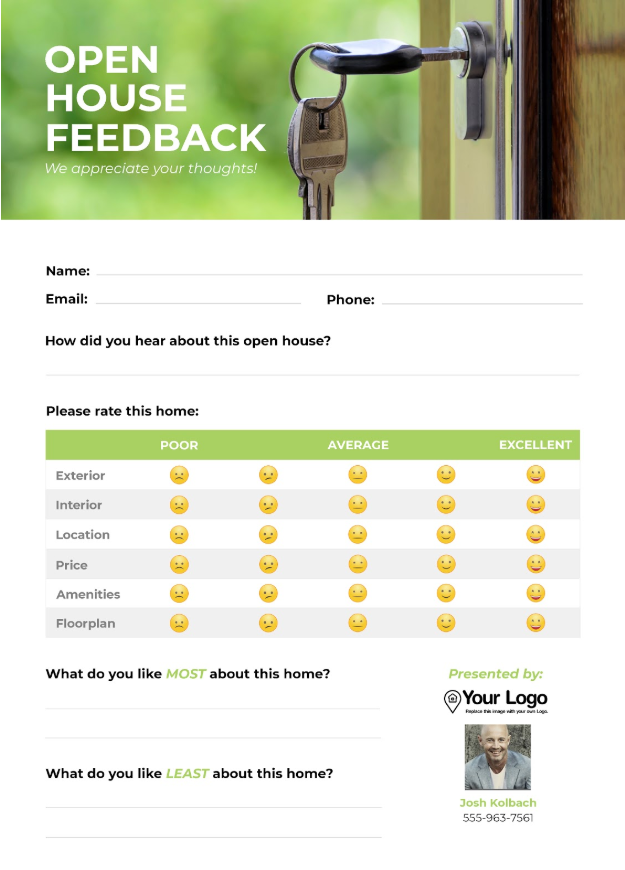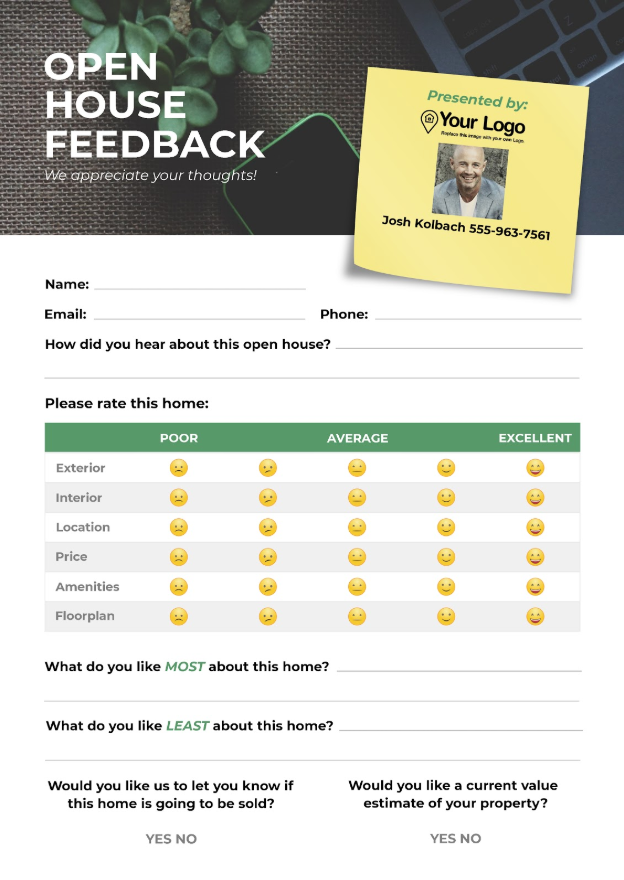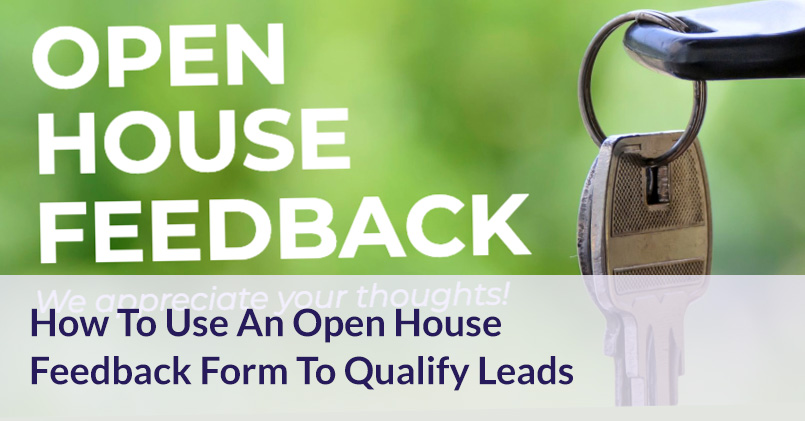Setting up an open house takes a considerable amount of time and effort. You need to stage the home, market the property, provide snacks, put out signs, and perform a whole lot of busy work before the big day. Not to mention spending your weekend meeting with potential buyers. Since open houses represent such a significant expenditure of your time and capital, it is essential that you derive maximum value from every open house and you can do that with an open house feedback form.
Of course, the immediate goal of an open house is to sell the property. However, the secondary aim that is almost as important as the initial sale is using the open house to market your brand and build your lead list. An open house feedback form helps you gather and qualify leads so you can market your listing and also build your list of potential buyers.
Keeping your phone contact book full of potential buyers and sellers will increase your long-term sales and help you perform at the highest level. In this guide, we will show you how to create and use an open house feedback form.
What Is An Open House Feedback Form?
An open house feedback form is similar to those feedback cards you see at restaurants or hotels that ask you to rate the quality of service at a business. You hand out an open house feedback form to everyone that visits your open house in a given day.
Your form will have questions that ask about issues related to the open house.
Questions On A Sample Open House Feedback Form
Each feedback form is different, but there are a few go-to questions that you should ask each prospective buyer that visits your open house. Below are a few items that are essential adds to your buyer feedback form.
1. Visitor Contact Information
This section should include basic information like the potential buyer’s name, home address, email address, web site, etc. You collect this information and later input it into your CRM or lead tracking system to contact the buyer with information/marketing materials about homes in the area.
2. How Did You Hear About Us?
This section asks visitors how they heard about your open house. This information is critical because it helps you gauge the efficacy of your marketing campaigns.
3. Home Rating Square
This section contains a graph with numbers that correspond to the value of certain aspects of the home. For example, you might ask them to rate the curb appeal of the home on a scale of 1 to 10 or the cleanliness. Other common entries include amenities, floor plan, location, decorating, and condition.
4. Price Opinion
This section asks prospective buyers what they think about the price of the home relative to the market. You can ask if the property is overpriced, underpriced, or just right.
5. Time Frame
The time frame section asks buyers when they are considering purchasing a new home/moving. This question gives you the ability to understand when the buyer will be on the market. You can later set your marketing plan to contact them during their ideal buying window.
6. Other Real Estate Professional Info
You should also ask if the buyer is working with another agent or broker. If they are already working with someone you can still save their information and contact them down the line to ensure they are happy with their current agent.
How Can You Leverage An Open House Feedback Form To Qualify Leads?
Once you have collected visitor data you can use it to qualify potential leads. This qualification process whittles down your list so that you spend time working with real potential buyers, rather than “tire-kickers” or “looky-loo’s.”
The questions you ask should focus on determining whether or not someone has the ability to purchase the home. Questions about buying windows, current residence, and employment information are commonly used to determine whether or not a person has a serious intent to purchase a home. The purchase intent does not have to be for the specific open house property, just the general desire and ability to buy a home in the near-term.
How Do You Make An Open House Feedback Form Online?
Unless you are a graphic designer by trade, making your own forms is not easy. There are file formats to deal with, programs to download, and a whole host of other issues that make it a huge pain to create your own marketing materials. Of course, you can hire someone, but graphic designers do not come cheap.
There is another solution. Jigglar is an agent-centric online tool that offers the ability to create professional-quality open house forms, flyers, mailers, and more, and you don’t have to be a design-freak or computer genius to get incredible value out of the tool.
I created this open house form for free using Jigglar in less than 5 minutes:

Every entry on the form is customizable, including the text questions, pictures, contact information and more. You can integrate your existing branding and marketing materials with Jigglar to create a unified design theme that makes your brand stand out from the crowd.
Here is another premade example I made with Jigglar. This options is a bit more detailed and features a question and response section where prospective buyers can give their opinion.

According to MarketStar, only 25 percent of leads in the real estate world are legitimate and eventually convert. 75 percent of marketing leads never convert. Of the legitimate leads, half can buy but are not able to immediately.
These numbers signify that if you do not adequately qualify your leads you will be spending a great deal of your valuable time chasing buyers that cannot or will not buy. Use time-saving tools like Jigglar’s free open house feedback form creator to avoid these issues and maximize your ability to create as much value as possible with your time.




